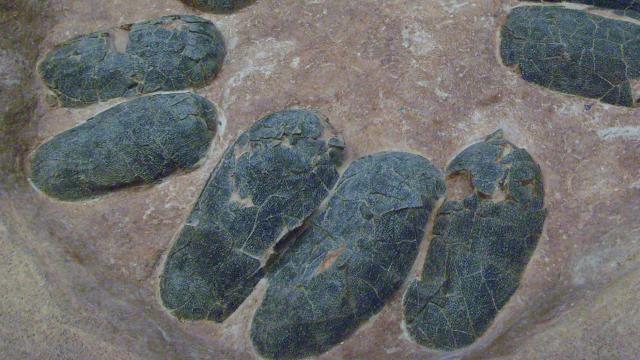Dinosaurs laid colourful eggs. Birds lay colourful eggs. You do the maths.
But really though: A study from last year found that oviraptors, a dinosaur of the late Cretaceous period, laid blue-green eggs, containing the same pigments as modern bird eggs. This made scientists wonder whether birds evolved coloured eggs on their own, or whether they inherited egg colour from an ancient ancestor. A new analysis finds that egg colour seems to have evolved only once, and that birds maintain this trait from their theropod days.
“Here, we’re able to show just another case that a lot of characteristics unique to birds have their roots much deeper in dinosaur history,” Mark Norell, division chair of paleontology at the American Museum of Natural History, told Gizmodo.
Researchers previously found evidence that oviraptor dinosaurs had pigment in their eggs just like birds do. They discovered this by slicing off a piece of a dinosaur egg and putting it through a molecule-identifying mass spectrometer machine. But for this recent study, two of the researchers from the first paper, along with Norell, hoped to analyse far more samples, so they needed a method that didn’t require harming the fossils.
“The method was the key to the whole paper,” Jasmina Wiemann, Yale graduate student, told Gizmodo.
The team sampled 19 eggshells from archosaurs, the group that includes crocodilians and dinosaurs, both extinct and living (including chickens). Rather than sampling pieces of the eggs, they used Raman spectroscopy—hitting the samples with a laser and detecting the wavelengths of the light that bounces back. The colours of the scattered light reveal the kinds of molecules present in the eggs.
Both pigments found in today’s bird eggs, red-brown protoporphyrin IX and blue-green biliverdin, also occurred in theropod eggs (direct bird ancestors), which had spotted and speckled patterns like bird eggs do. Pigment did not occur in the crocodilian, sauropod, or ornithischian eggs (the other two dinosaur groups), according to the study published in Nature. By mapping the distribution of egg colour onto the evolutionary tree and determining which eggs were coloured and which weren’t. the researchers found their data supported the hypothesis that egg colour evolved only once.
But why? Wiemann and Norell both hypothesized that the emergence of egg colour stemmed from theropods no longer laying their eggs in underground or covered nests. An open nest meant that eggs that blended in had a better shot of surviving than stark white eggs did—or in other cases, perhaps theropods needed to recognise their own eggs in case another animal sneakily laid an egg in the nest. One animal coloration expert not involved in the study, professor Mary Caswell Stoddard at Princeton, thought the research would ignite conversations about dinosaur behaviour.
“The exciting discovery that pigmented eggshells evolved in nonavian theropod dinosaurs will change the way we think about dinosaur nesting and incubation behaviour,” she said. “What were the functions of diverse eggshell colours and patterns? Were they for camouflage? Thermoregulation? Or, as in some parasitic birds, to mimic the appearance of a host’s eggs? These are just a few of the questions behavioural ecologists and paleontologists will be asking in the years to come.”
This is also what Wiemann hopes to research next—which theropods had coloured eggs and which didn’t, and how bird nests correspond to egg colour. The researchers will now need a larger sample of eggshells to analyse.
But, once again, birds are living dinosaurs. This result is yet another example demonstrating that.
[Nature]
